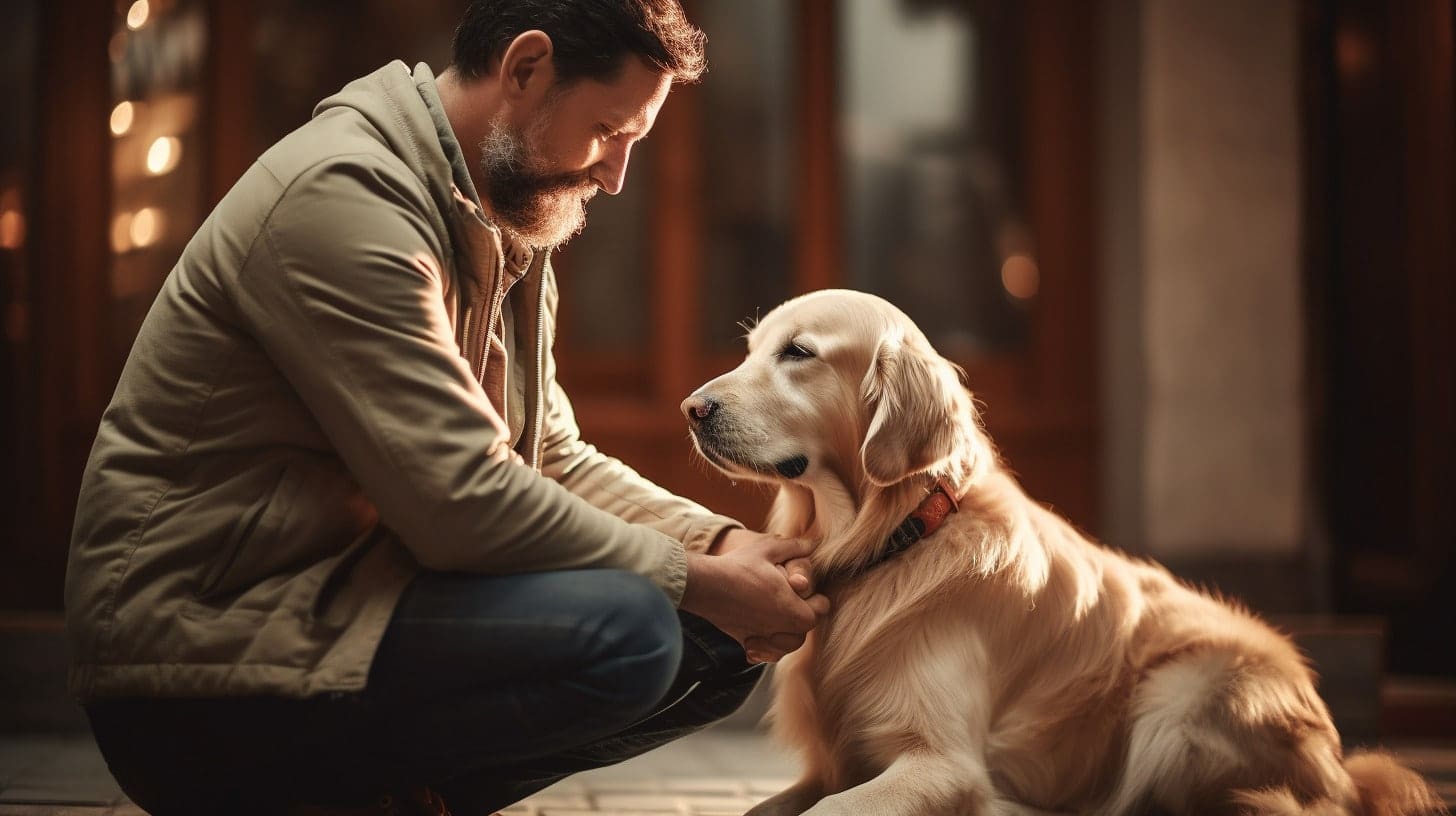Balanced Dog Training
As a dog lover and home trainer, I've discovered the incredible power of balanced dog training. It's not just about obedience or discipline; it's about creating a harmonious bond with your furry companion.
In this article, I'll dive into the world of balanced dog training, exploring its benefits, techniques, and real-life examples of transformation. By combining positive reinforcement with gentle corrections, we can shape desirable behaviors and eliminate unwanted ones.
Join me on this journey of balanced dog training and witness the incredible transformations that await both you and your beloved canine companion.

The Basics of Balanced Dog Training
I learned about the basics of balanced dog training through my own experiences with frustration and dissatisfaction with positive reinforcement methods.
Like many dog owners, I believed that using aversive tools like e-collars and prong collars was cruel and inhumane.
https://longhaultrekkers.com
I'd been trying to train my dog using only positive reinforcement techniques suggested by experts, but I found it challenging. Despite months of effort, I couldn't seem to train my dog loose leash walking or manage his excitement. Even after playing recall games, he'd still take off in the woods. This frustration led me to explore other training methods.
One childhood memory stood out to me: visiting my aunt and uncle's dog training lesson. They used a chain collar and an e-collar for training. The dog, Noogie, was well-behaved and trustworthy. My aunt's compassionate nature assured me that these corrective tools were used humanely. This memory influenced my decision to explore this kind of training.
I was also dissatisfied with previous training methods when my partner found a trainer through a rescue organization. The trainer used a martingale collar and removed privileges at home. During walks, they'd ignore our dog's reactions for extended periods and use leash corrections that made him flinch. Treats and praise were limited during training sessions.
Through my own experiences, I've come to understand the basics of balanced dog training. It involves a combination of positive reinforcement and correction techniques. It allows for clear communication between the dog and the trainer, and it addresses challenging behaviors such as leash reactivity and prey drive.
By using the right tools, such as a prong collar, in a humane and responsible manner, training can bring about effective results and a stronger bond between you and your dog.
Positive Reinforcement vs. Purely Positive Training
Positive reinforcement is a highly effective training method that offers numerous advantages over purely positive training. As a dog owner, I've found that incorporating these training techniques, which include positive reinforcement and aversive methods, has yielded the best results for my pet. Here are four reasons why positive reinforcement is a superior training approach:

1. Ethical and humane: Positive reinforcement focuses on rewarding desired behaviors, promoting a positive and trusting relationship with your dog. It avoids the use of aversive tools like prong collars, shock collars, and e-collars, which can cause unnecessary pain and distress.
2. Effective and long-lasting: Reward-based techniques have been scientifically proven to be more effective in training dogs. By rewarding good behavior, you're reinforcing the behavior you want to see, leading to better obedience and faster learning. These techniques also promote long-lasting behavior change.
3. Reduces anxiety and fearfulness: Aversive methods and punishment-based training can lead to increased anxiety, aggression, and fearfulness in dogs. Positive reinforcement, on the other hand, creates a positive and safe learning environment, minimizing stress and fear.
4. Suitable for all dogs: Whether you have a puppy, an adult dog, or a senior canine companion, positive reinforcement techniques are suitable for dogs of all ages, breeds, sizes, and temperaments. It allows for customization and flexibility in training plans, catering to the individual needs of your dog.
It might come as a surprise that training your dog isn’t just about instilling manners to produce a polite, happy, confident companion. Sure, knowing how to sit, stay, and come when called are vital, but it’s far more important to preserve your growing bond with your dog by using dog-friendly, science-backed techniques.
https://www.petmd.com
Pitfalls to Avoid: Common Dog Training Fails
It's important to consistently reinforce the behavior you want to see in your dog, avoiding the common pitfall of inadvertently rewarding unwanted behavior. In the world of dog training, there are various methods and techniques that can be used to shape a dog's behavior.

One popular approach is positive reinforcement training, which focuses on rewarding desired behaviors with treats, praise, or toys. This method encourages dogs to repeat those behaviors in the hopes of receiving more rewards. However, it's essential to remember that not all training methods are created equal.
One common dog training fail is relying solely on punishment as a means of correcting behavior. While punishment may temporarily suppress unwanted behaviors, it fails to address the underlying cause and can lead to negative side effects. Punishment-based methods can create fear, anxiety, and even aggression in dogs, which isn't conducive to a balanced approach to training.
Another pitfall to avoid is using tools and techniques that can cause harm or discomfort to your dog. For example, using a training collar to control a dog that pulls on the leash may seem like a quick fix, but it can cause physical and emotional harm. Instead, consider using positive reinforcement techniques such as reward-based training and training your dog to walk nicely on a loose leash.
In a balanced approach to training, it's important to understand that dogs learn best when they're motivated and engaged. This means focusing on rewarding desired behaviors and preventing the reinforcement of unwanted behaviors. By consistently reinforcing the behavior you want to see in your dog, you can create a positive training experience that builds a strong bond and encourages your dog to make good choices.
Remember to be patient, consistent, and always prioritize your dog's well-being.
The Science Behind Balanced Training Methods
As a dog lover my aim is to understand the science behind various training methods and apply them effectively to strengthen the bond between dogs and their handlers.

Balanced training is a comprehensive approach that combines positive reinforcement and reward-based techniques with appropriate aversive corrections when necessary.
Here are four key points to consider when exploring the science behind these training methods:
1. Science-based techniques: Balanced training is rooted in the principles of learning theory and operant conditioning. It considers the individual dog's needs, motivations, and temperament to create a customized training plan.
2. Positive reinforcement: This involves adding something desirable to encourage a behavior. By rewarding desired behaviors with treats, praise, or play, dogs learn what's expected of them and are motivated to repeat those behaviors.
3. Aversive corrections: While positive reinforcement is the foundation of this training, aversive corrections may be used in certain situations. These corrections are carefully applied to discourage unwanted behaviors and redirect the dog towards more desirable ones.
4. The bond between dog and handler: By using a balanced approach, professional dog trainers can create a strong bond based on trust, respect, and clear communication. This bond enhances the dog's willingness to learn and strengthens the overall relationship.
Understanding the science behind these training methods is essential for professional dog trainers and dog owners alike. By employing a balanced approach that combines positive reinforcement and appropriate aversive corrections, we can effectively train dogs while maintaining their well-being and fostering a positive and trusting relationship.
The Right Way to Implement Correction in Dog Training
While aversive corrections can be a controversial topic in dog training, it's essential to understand the right way to implement them for effective and humane results. Balanced dog training is a method that combines positive reinforcement with appropriate corrections to teach desired behaviors to our furry friends.

it's our duty to ensure that our training methods are both effective and compassionate.
Positive reinforcement is a powerful tool in dog training, or in being a balanced trainer if you like, as it rewards desired behaviors and motivates many dogs to repeat them. However, there are times when a correction is necessary to redirect unwanted behaviors or to establish boundaries. Implementing corrections in the right way is crucial to avoid causing harm or fear to our dogs.
When implementing a correction, it's important to use a balanced approach. This means that corrections should be used as a last resort, after positive reinforcement and clear communication have been attempted. Corrections should be fair, timely, and appropriate for the behavior being addressed. It's important to remember that corrections aren't meant to punish or intimidate our dogs, but rather to provide clear guidance and help them understand what's expected of them.
Try to avoid negative reinforcement or negative punishment as a way to train yours or any pet.
In balanced training, the focus is on teaching desired behaviors rather than solely correcting unwanted behaviors. By utilizing positive reinforcement and implementing corrections in a thoughtful and humane manner, we can effectively train our dogs and strengthen the bond between us.



